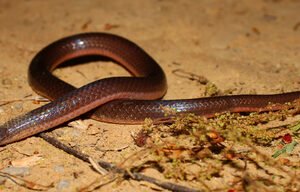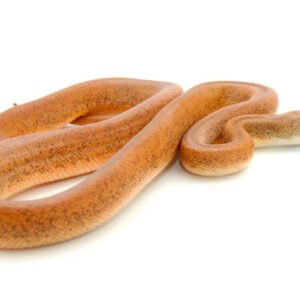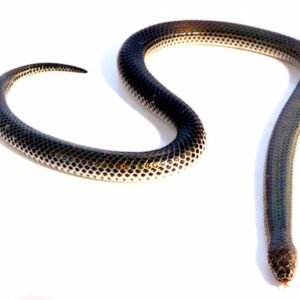The Fascinating World of the Red-Sided Garter Snake
Introduction to the Red-Sided Garter Snake
The red-sided garter snake, scientifically known as Thamnophis sirtalis parietalis, is a captivating subspecies of the common garter snake, which is widely recognized throughout North America. This reptile is particularly distinguished by its vibrant coloration and unique behaviors, making it a subject of interest among herpetologists and wildlife enthusiasts alike. The red-sided garter snake features a striking appearance that includes a series of bold, vivid stripes running along its length, which are typically yellow or white against a dark brown or black body. The name “red-sided” is derived from the characteristic red or orange hues present on its sides, adding to its visual allure.
In terms of habitat, the red-sided garter snake typically inhabits grasslands, open woods, and areas near water sources, where it can be observed basking in the sun or hunting for prey. These snakes are adept swimmers and often utilize aquatic environments for both foraging and shelter. Their diet primarily consists of small amphibians, fish, and invertebrates, showcasing their role in the local ecosystem as both predator and prey.
Not only are red-sided garter snakes easily recognizable, but their social behavior is also noteworthy. During the cooler months, they exhibit a fascinating phenomenon known as brumation, where they congregate in large groups, often in the same hibernation site. This behavior not only provides warmth but also enhances their chances for survival during the harsh winter months. The unique adaptations and social interactions of the red-sided garter snake illustrate the complexities of its life cycle and contribute to its captivating mystique within the broader context of snake species.
Habitat and Distribution
The red-sided garter snake (Thamnophis sirtalis parietalis) is predominantly found across certain regions of North America, particularly within the grasslands and wetlands of the Midwest and parts of Canada. These regions provide a unique combination of environmental factors that contribute to their survival and reproduction. The preferred habitats of red-sided garter snakes consist of moist environments where they can easily access food sources and regulate their body temperature. The presence of water bodies, such as ponds, lakes, and marshes, is significant, as these areas host an abundance of prey, including amphibians and small vertebrates.
Temperature plays a crucial role in the habitat selection of the red-sided garter snake. They are ectothermic creatures, relying on external heat sources to maintain their body temperature. As such, they often favor sunny areas near water where they can bask and warm their bodies. It is also vital for these snakes to have sheltered retreat sites, like dense vegetation or rock crevices, which provide protection from potential predators while allowing them to hunt effectively. Additionally, the seasonal changes profoundly influence their distribution, with these snakes becoming more active during warmer months when food is plentiful.
Urban development and climate change are significant threats that impact the habitat and distribution of the red-sided garter snake. Urban expansion leads to habitat fragmentation and loss, limiting their access to essential resources. Similarly, climate change modifies the ecosystems these snakes inhabit, potentially altering the temperature and availability of prey. These changes could result in a decline in red-sided garter snake populations, as they may struggle to adapt to rapidly changing environments. Conservation efforts aimed at maintaining their natural habitats and mitigating the effects of urbanization and climate change will be pivotal in ensuring the long-term survival of this fascinating species.
Diet and Feeding Habits
The red-sided garter snake (Thamnophis sirtalis parietalis) is an opportunistic predator, known for its diverse diet that includes a variety of prey such as amphibians, small mammals, and other reptiles. This dietary flexibility allows them to thrive in various habitats, making them highly adaptable within their ecosystems. Common amphibian prey includes frogs and toads, while small mammals such as mice and voles also form a significant part of their diet. Additionally, during certain seasons, they may feed on smaller snakes, particularly those that are less armored or agile.
One of the key aspects of their hunting strategy is their remarkable sense of smell. Red-sided garter snakes possess a specialized organ known as the Jacobson’s organ, which enables them to detect chemical cues in the environment. This olfactory capability is instrumental when locating prey, allowing them to explore their surroundings effectively. Once the snake identifies potential prey, it employs stealthy movements to approach, often relying on camouflaging and ambushing techniques to increase the likelihood of a successful capture.
Upon catching their prey, these snakes typically utilize constriction as their primary method of immobilization. After coiling around the struggling animal, they apply pressure until the prey succumbs. This method is particularly effective for amphibians and small mammals that cannot escape once ensnared. As a significant predator in their habitat, red-sided garter snakes play a crucial role in controlling the populations of their prey species. Their feeding habits not only impact their health and growth but also influence the overall balance of the ecosystem they inhabit, showcasing their importance as a vital component of the food web.
Conservation Status and Threats
The red-sided garter snake (Thamnophis sirtalis parietalis) is a species that faces several conservation challenges, primarily due to habitat loss, climate change, and human interference. Habitat destruction is a significant threat to the survival of this unique snake, as urban development, agriculture, and deforestation continue to encroach upon their natural environments. As these habitats are fragmented or destroyed, the snakes are forced into smaller and less viable areas, which can lead to decreased populations and genetic diversity.
Climate change also poses a considerable risk to the red-sided garter snake. Changes in temperature and weather patterns can alter their seasonal behaviors, such as breeding and hibernation cycles. If the climate warms too quickly, food availability may shift, disrupting the delicate balance of ecosystems that garter snakes rely on for survival. Additionally, altered rainfall patterns can affect the availability of water bodies crucial for their habitats.
Human persecution, whether through direct killing out of fear or misunderstanding, or through intolerance of their presence in residential areas, adds another layer of threat. Many people mistakenly believe that garter snakes are dangerous, leading to unwarranted hostility towards these valuable creatures. Educational efforts aimed at dispelling myths about snakes and promoting their ecological importance are essential for fostering coexistence between humans and wildlife.
Conservation initiatives are underway to protect the red-sided garter snake by preserving their habitats and implementing sustainable land-use practices. Various organizations are engaged in raising awareness, conducting research, and advocating for policies that safeguard these snake populations. Individuals can contribute to these conservation efforts by educating themselves and others about the significance of snakes in maintaining ecological balance, participating in local conservation programs, and promoting wildlife-friendly practices in their communities.





